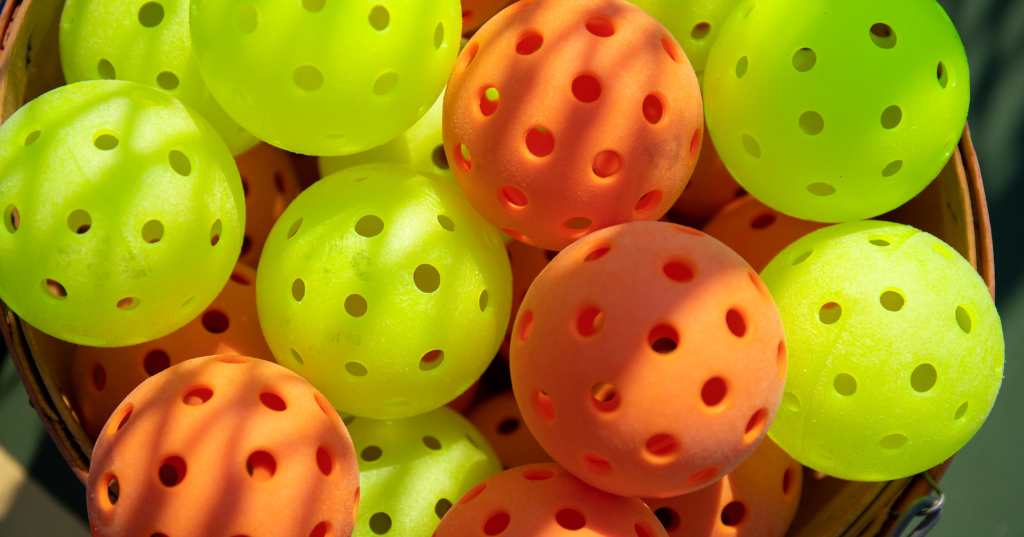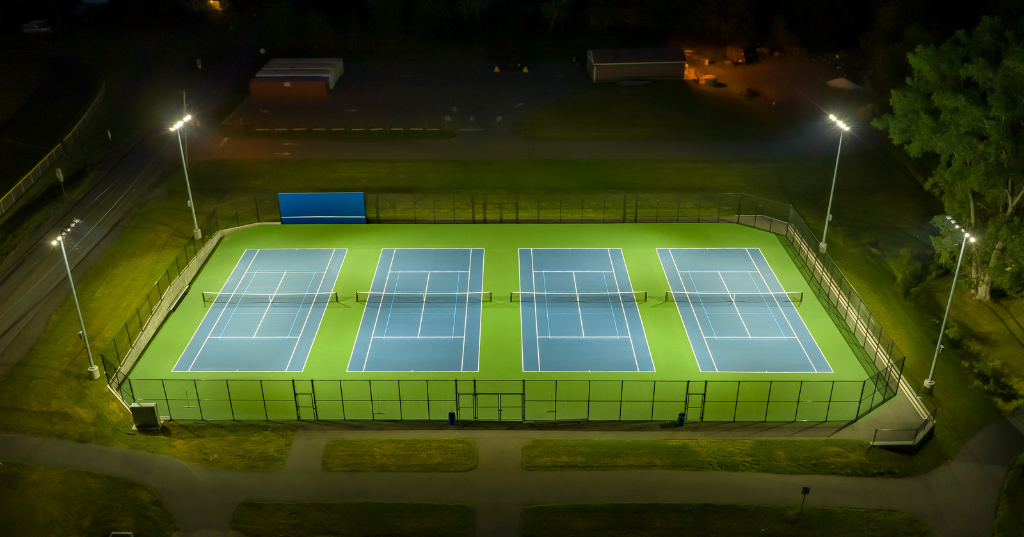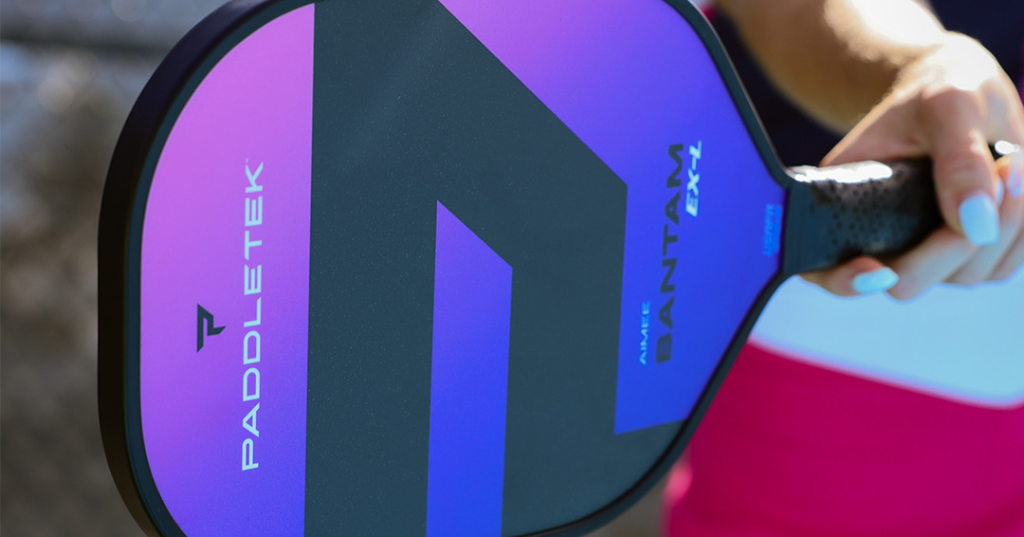If you want to have a heated conversation on the pickleball court, simply bring up the drop serve. Ever since it entered the pickleball world, the drop serve has caused quite a stir.
Changing any sort of rules in a sport will certainly create conversation, but adding an entirely new way of serving to the mix can be controversial.
While many traditionalists of the game won't attempt a drop serve, beginners may not even know the drop serve is an option. If you fit either of those party lines, then this article's for you.
We'll explore the pros and cons of drop serving, because believe it or not, it can be an effective way to serve the ball for certain players. We'll explore who should and shouldn't incorporate drop serves into their repertoire.
But first, let's all get on the same page and quickly summarize the drop serve in pickleball.
What is a Drop Serve?
The pickleball drop serve is executed by dropping the ball and then serving it after it bounces. This method contrasts with the traditional volley serve in pickleball. In a drop serve, the server can release the ball from any natural height, but only gravity can be used to create the bounce.
This means the server can simply release the ball and let gravity run its course. They aren't allowed to force the ball down to create a higher bounce or any other type of manipulation or spin. The ball may also bounce more than once before it is hit.
The traditional style of serving (volley serve) calls for no contact with the ground before hitting the ball, and it has to be underhand. One way this is measured is the height at which the ball makes contact with the paddle, a legal underhand serve must be below the waist (navel).
Volley serves and drop serves are so different, you can see why some players might get fired up about the change.
So why introduce drop serves at all? Was it a rule change or just something trendy from a loophole found in the rules?
Is It Legal to Drop the Ball On the Serve in Pickleball?
As of January 2022, USA Pickleball fully incorporated a serve that legalized dropping the ball and hitting it after the bounce. This change is referred to as the drop serve, while it was provisional in 2021, USA Pickleball made the change permanent in 2022.
In short - yes, dropping the ball and serving it is now legal in pickleball and it's here to stay. USA Pickleball's official rules for 2022 (p.5. The Drop Serve 4.A.6.) state, \"No changes were made to the drop serve other than to remove its provisional status.\"
While dropping the ball and hitting it seem pretty easy to follow, there are still rules to follow for the drop serve to be legal.
USA Pickleball's Drop Serve Rules, In Plainspeak
Here's what you need to know about a legal drop serve, per USA Pickleball Rulebook, but summarized in simpler language:
Drop Serving Rule 4.A.6.a.:
- One-Hand Release: The server can only drop the ball from one of their hands or their paddle face.
- Reach is Max Height: The server's reach is the max height the ball can be released.
- Hit After Bounce(s): The ball can be hit only after it bounces at least once.
- No Bounce Limit: There's no limit on how many times the ball bounces or where it lands and bounces.
- Visible Release From Hand: The receiver, or referee if there is one, needs to be able to see the ball as it's released.
- Replay If Not Visible: If the receiver can't see the ball at release, the serve needs to be replayed.
- Same Foot Rules Apply: Traditional foot placement rules are still enforced (4.A.4.): one foot behind the baseline touching the surface, no touching court or baseline, and can't extend into the sideline or centerline.
Drop Serving Rule 4.A.6.b.:
- No Force Allowed: Only gravity can create the ball's momentum for bouncing, i.e., the server can't throw the ball down, or toss it up before bouncing with their hand or paddle.
Drop Serving Rule 4.A.6.c.:
- Forehand And Backhand Allowed: Once the ball bounces, the server can make contact with either a forehand or backhand.
A drop serve isn't subject to three important criteria that make a volley serve legal. This is perhaps the biggest source of debate for the addition of the drop serve. The drop serve uniquely plays by rules in direct contrast to a volley serve, including:
- Upward Arc Not Enforceable: The server doesn't need to move their arm in an upward arc before hitting the ball
- Paddle Can Be Above the Wrist: The highest point of the paddle can be above the wrist when making contact with the ball
- No Waist Constraint: When the paddle hits the ball, it can be at, above, or below the waist of the server
Is a Backhand Drop Serve Legal in Pickleball?
A backhand drop serve is legal in pickleball, according to USA Pickleball's rule 4.A.6.c. However, the backhand must still follow all rules of the drop serve, such as falling from a natural height, being visible upon release, not having any force applied, bouncing at least once, etc.
If you have an amazing backhand, the drop serve might actually be helpful. In some ways, the drop serve could even enhance a backhand serve:
- It removes having your non-paddle hand awkwardly in front of your paddle for the serve.
- You could use the paddle face to drop the ball, effectively removing your non-paddle hand from the serve.
- If you had a killer two-handed backhand, or that's your style of backhand, you could potentially use it with a drop serve.
You might think that with all these changes and what seem like advantages, amateur and pro players would jump ship and start drop serving. But that's not necessarily the case...
Do Any Pickleball Pros Use the Drop Serve?
A limited number of pros use the drop serve technique making it extremely rare to see in tournaments. This stems from some pro circuits banning the drop serve, but mostly because the main advantage of a drop serve is added consistency, which is beneficial to beginners and amateurs, not pros.
While consistency is certainly a factor, there are other benefits that amateurs can enjoy. But these benefits are primarily enjoyed by specific segments of players, while other segments are disadvantaged by the drop serve.
The Pros and Cons of Pickleball's Drop Serve
The 5 Advantages of Drop Serving
1. Improved Consistency
Drop serving is essentially hitting the ball forehand or backhand, as you would in all other shots, sans volleys.
Because drop serving mimics groundstrokes, a motion you have more experience with, it's a helpful tool for creating mechanical consistency, or breaking you out of the yips for similar reasons.
Repetition and muscle memory are to thank for improved consistency as a result.
2. Two-Handed Backhand
Yes, some people use a two-handed backhand and a select few can do some incredible things with it, such as serving. But if you use a two-handed backhand, it's clearly impossible to volley the ball in the traditional format.
So for those who have a strong two-handed backhand that's just itching to show off serving, you'll get a lot out of the drop serve and find it adds power and stability to your backhand serve.
3. Added Spin
Regardless of what type of spin you add to your serve, the drop serve in many ways makes it easier to achieve. There are two reasons for this.
First, once the ball releases from your hand and bounces, just about anything goes as it relates to contact, or at least there are far fewer restrictions compared to a volley serve. So putting a spin on the ball becomes more feasible.
The second reason it's easier to add spin is that at the peak of the first bounce, the ball will generally be in a lower-than-typical position, giving you an advantageous angle to add spin to your serve.
This added spin can be helpful in recreational play where your opponent might struggle with spin, or just as a means to reduce the predictability of your drop serve, one where you can add different types of spin each time serving.
4. Variety of Serves
Having a wide range of serves is a great asset. For beginners especially, who may just have one type of serve, adding the drop serve to your arsenal will help keep your opponents on their toes.
You can vary your drop serve with a wide array of spins and trajectories which will make you even more unpredictable for the receiving player.
But there are diminishing returns to this, which correlate to player ratings. In general, as the skill rating of your opponent increases, the drop serve will be less helpful as a service to mix things up.
5. Easier to Learn and Enforce
Maybe this one's for the refs out there, but in general, it's difficult to enforce a legal serve when it's a volley. Between rules about the top of the paddle not being higher than your wrist at contact and striking the ball below your waist, there's a lot of room for interpretation.
For beginners, a drop serve is far simpler than a volley serve. It's easier to learn and simpler to discern what's legal and what isn't.
The 3 Disadvantages of Drop Serving
1. Less Deceptive for Advanced Players
Advanced players can read and recognize a wide array of serving styles. This includes the drop serve, so at a certain point, it loses that deceptive edge you may have had with less skilled opponents.
This is partly due to the rules surrounding the visibility of the ball during a serve. While both the drop serve and volley serve to require that the ball is visible to the opponent or ref during release, a volley serve, much like a pitcher's glove in baseball, acts as a cloak for what's about to happen with a serve.
Sure, the release still needs to be visible in a volley serve, but hitting it from your hand will always be more difficult to read than swinging off of the bounce. This can play a bigger role in keeping opponents in the dark related to your serve which isn't an option for drop serving.
2. Added Variables for Mistakes
In some ways what makes the drop serve a more consistent method for serving is also what makes it inconsistent and unpredictable for the player serving.
Once the ball leaves your hand, you no longer have control over where it goes; a non-existent variable with the volley serve.
This means the wind can blow the ball wherever it wants. Or it can maybe hit a strange spot on the court, causing you to make poor contact. Perhaps you simply don't make contact where you think the paddle should.
Temperature is also a factor here. On colder days the ball bounces higher than on warmer days so that is another variable to consider each time you step up to serve.
The added variables can be a contributor to less consistent serves, and even if it's just 2 or 3 times a match, that could be enough to side out and potentially lose a game.
So while drop serves are easier to learn mechanically, perhaps more consistent overall, and boost spin; there's an element of risk that comes with it and a loss of precision for where the ball meets the paddle.
3. Waist is Higher Than Bounce
Perhaps the biggest difference between a volley serve and a drop serve is the height of where you hit the ball. For a volley serve, it's below the waist. For a drop serve, it's anywhere you like after it bounces.
However, the biggest challenge here for some players, especially those that want to strike the ball from a higher position, is that the ball will rarely if ever reach a height near your waist.
Remember you can't add any power or spin behind the drop, so this is just physics at play - gravity is the only force that you can use to create the bounce, and your reach is the true limitation of height.
So, Who Should Drop Serve?
If you're a beginner or someone struggling to find mechanical consistency in your serve, incorporate the drop serve. However, if you've been playing pickleball for some time and serve underhand with consistent success, adding a drop serve is less likely to improve your game.
An experienced player, but not necessarily a 4.0, could benefit from a drop serve because it would add a new style of serving to their game. Not a lot of players use it so it’s a good option for an intermediate player who wants to add some variety to their serves.
But because of its predictability, increased likelihood for bad bounces, and general inability to go above one's waist on the first bounce, it's not a great serve for 4.0+ players.
But, the drop serve is here to stay, and with the growth of the sport, that's a good thing. It shortens the serve learning curve for new players and this builds the sport and pickleball community faster as a result.
Overall, making the serve something a beginner can find consistent success with has more upside than downside for pickleball. So say hello to the drop serve!




Leave a comment
This site is protected by hCaptcha and the hCaptcha Privacy Policy and Terms of Service apply.